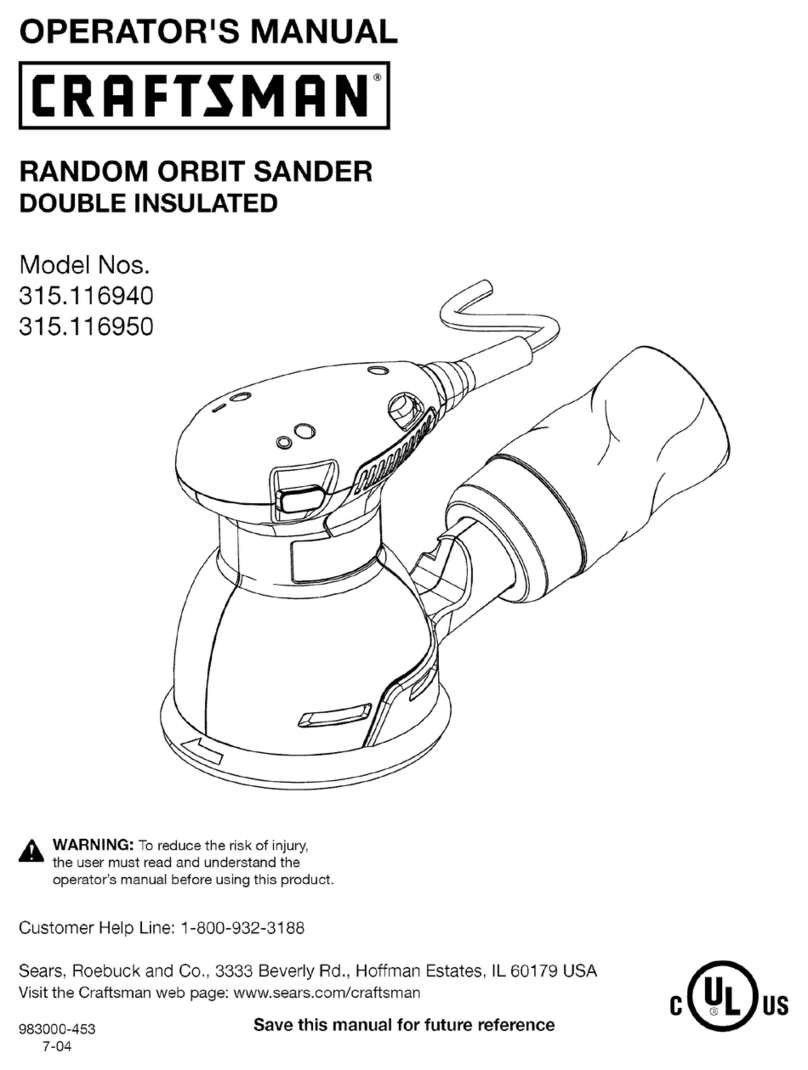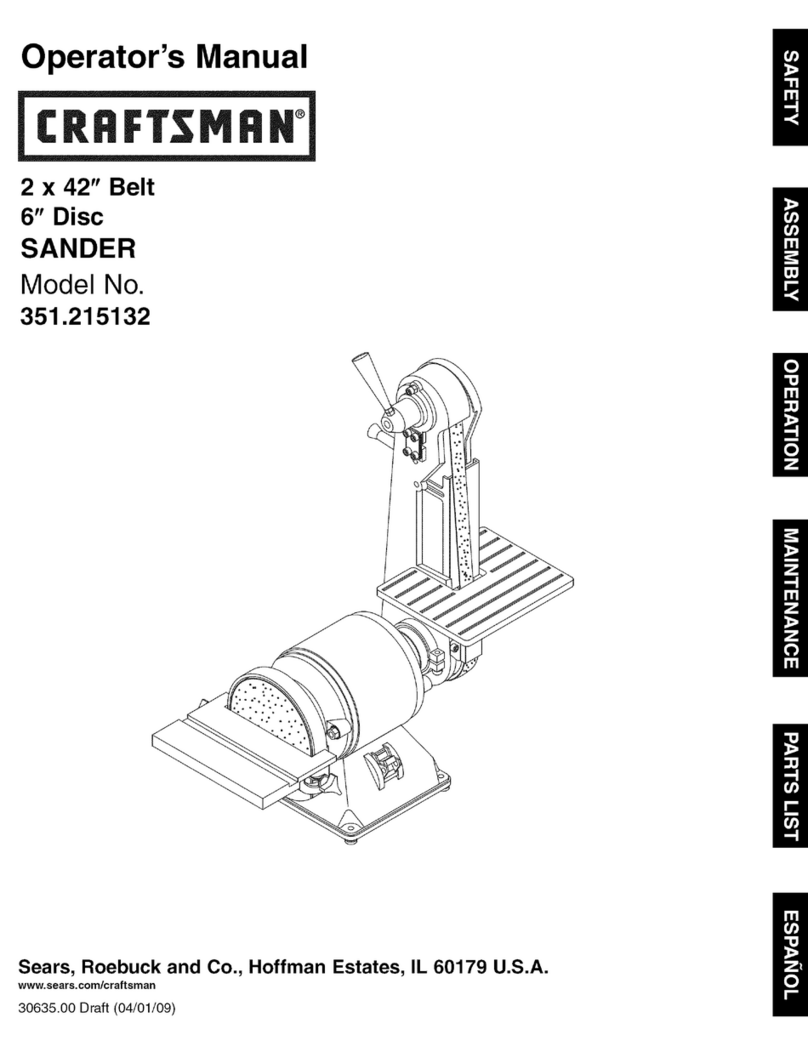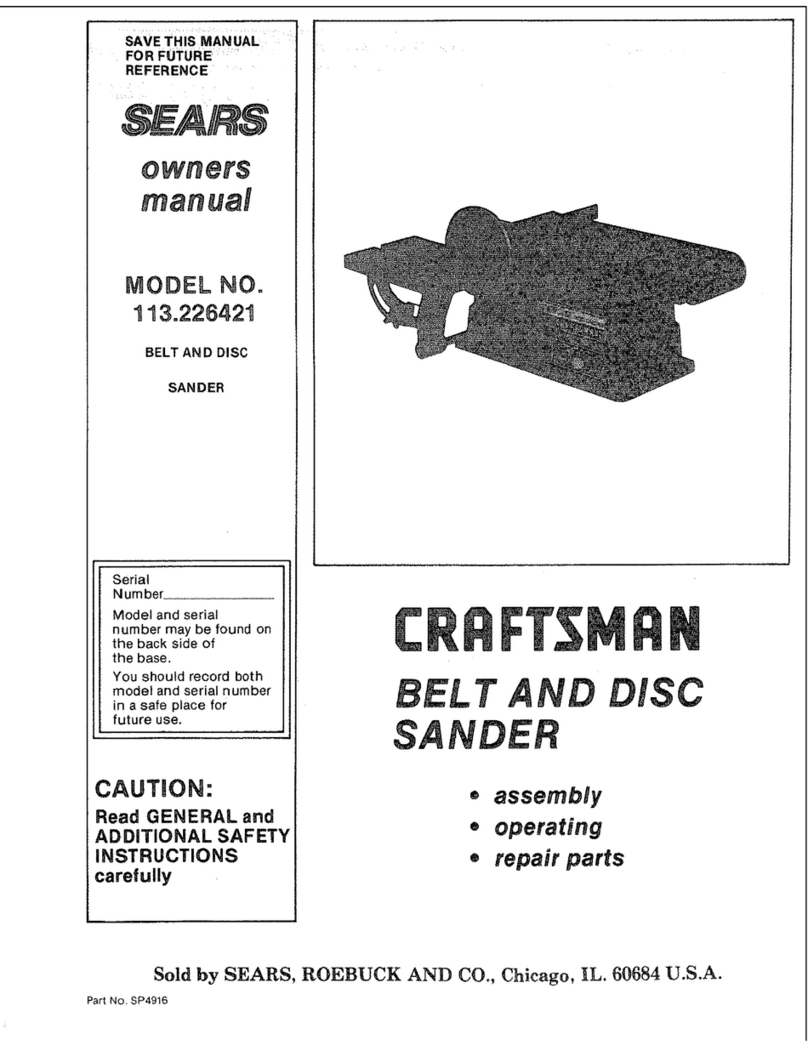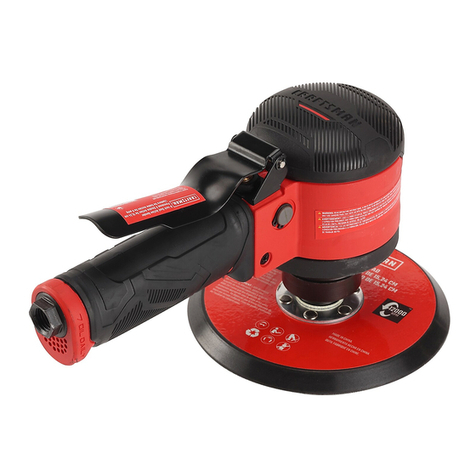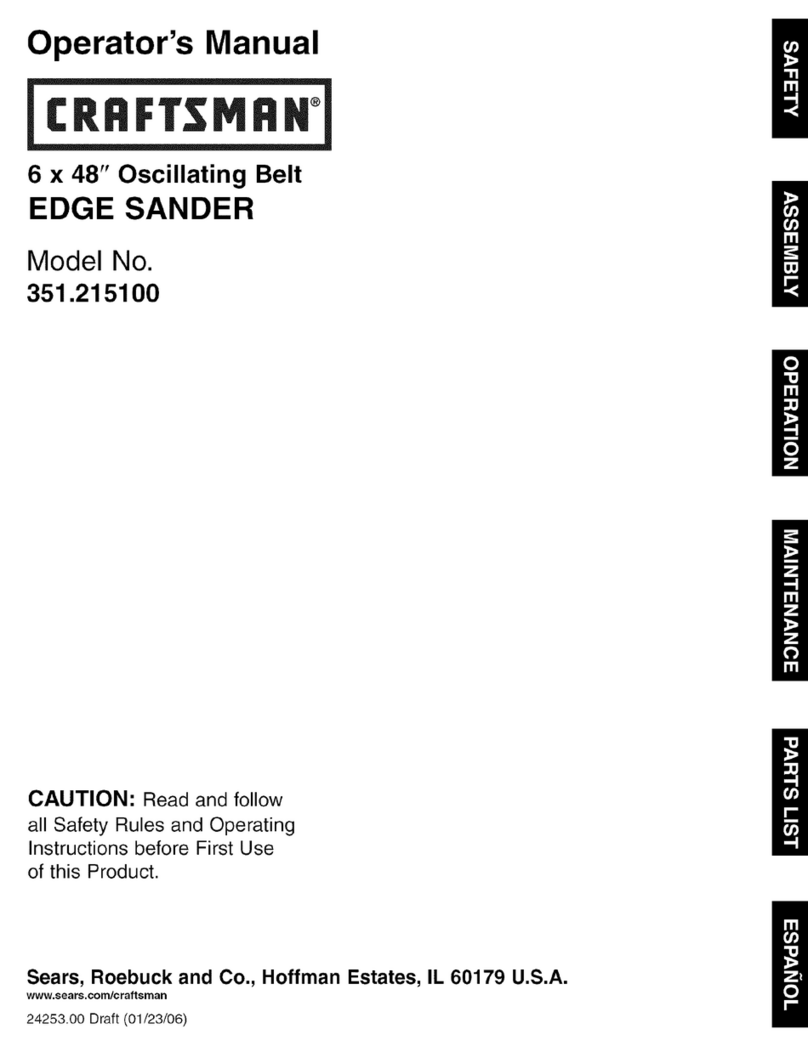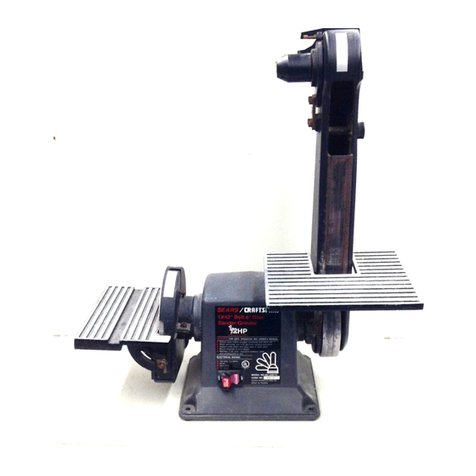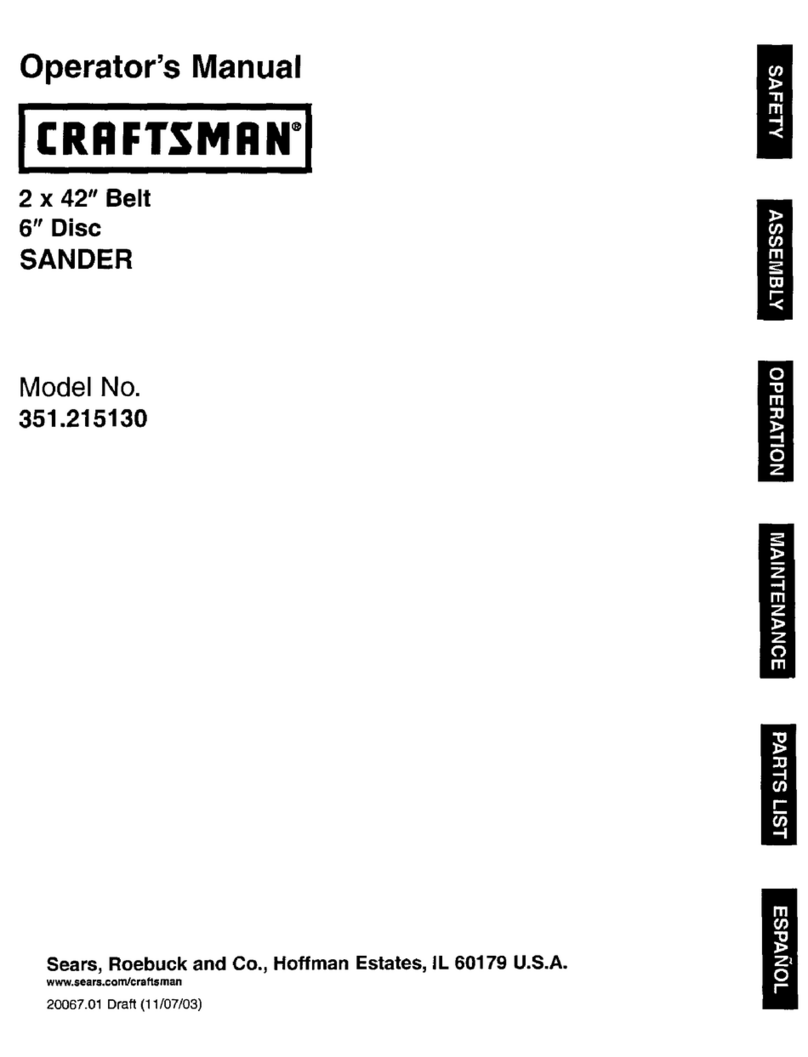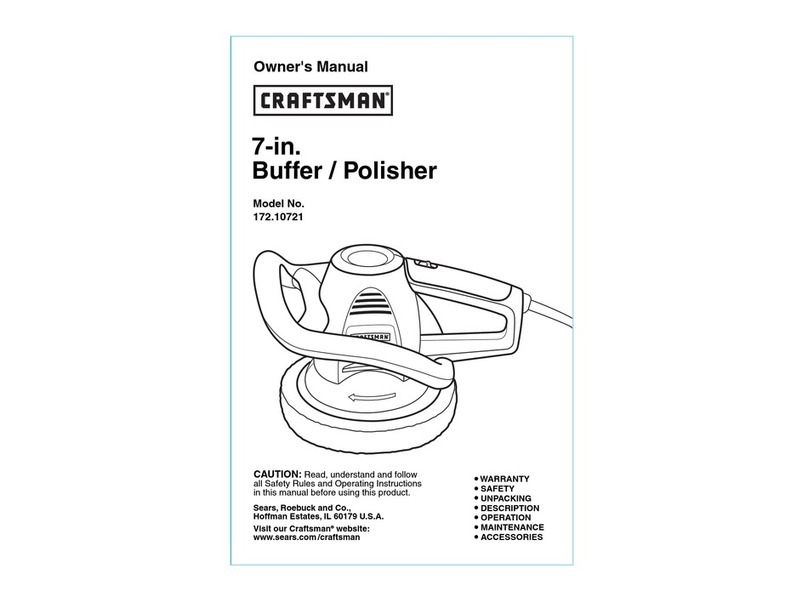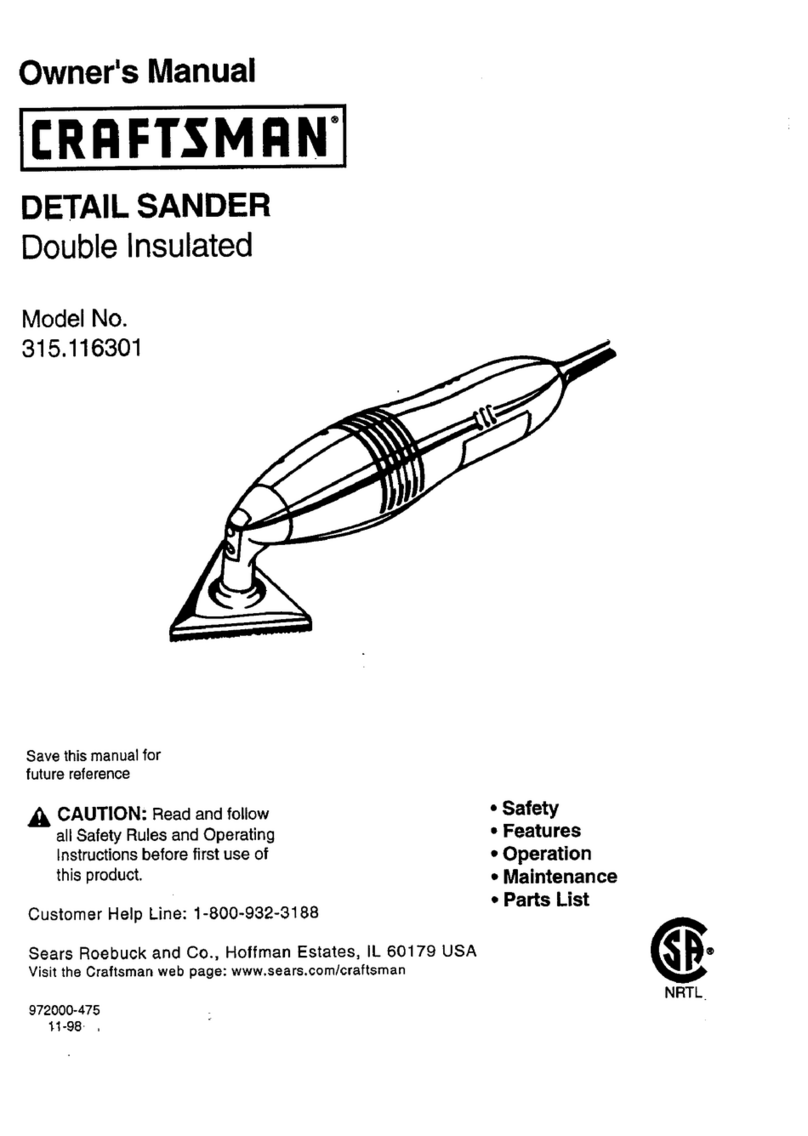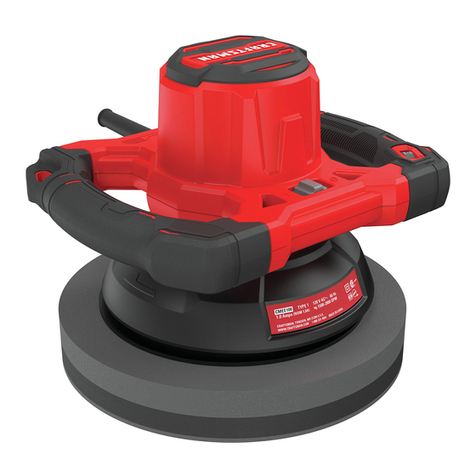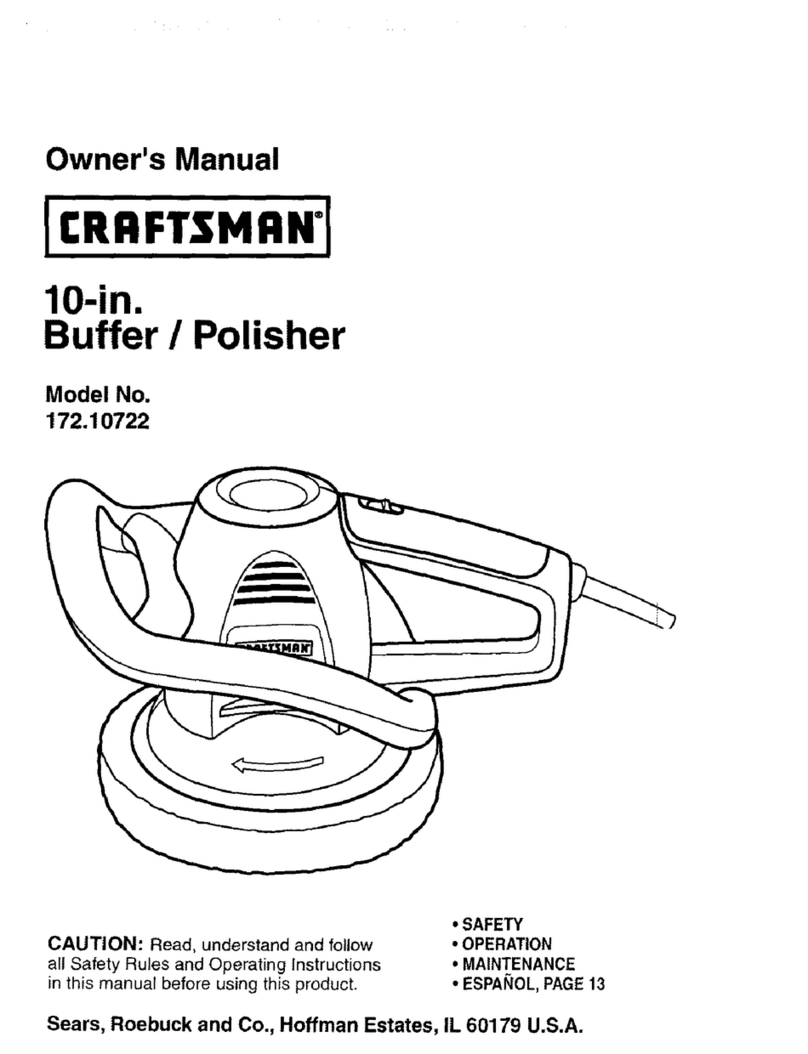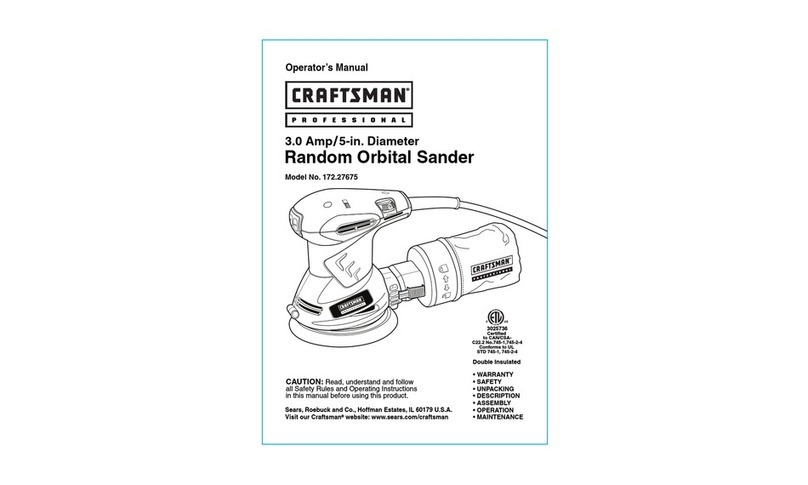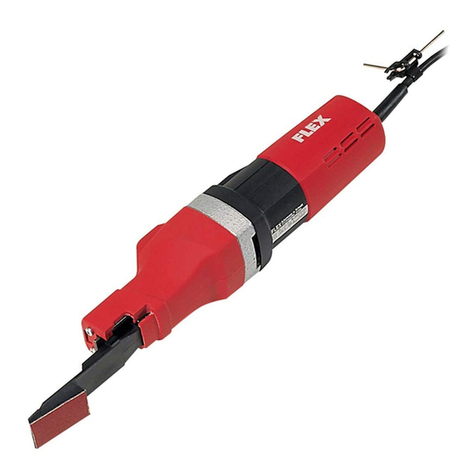A WARNING: Read and understand allInetruc-
Uons, Failureto follow all instructionslistedbelow,
may resultin electricshock,fire and/orserious
personalIniury.
SAVE THESE INSTRUCTIONS
WORK AREA
• Keep your work area clean and well lit. Cluttered
benchesand darkareas inviteaccidents.
•Do not operate power tools in explosive abno-
spheres, such as in the presence of flammable liq-
uids, gases, or dust. Power tcols create sparkswhich
may ignitethe dust or fumes.
•Keep bystanders, children, and visitors away while
operating a power tool:DlslTactlons cancauseyouto
losecontrol.
ELECTRICAL SAFETY
•Double Insulated tools are equipped with a polar-
ized plug (one blade Is wider than the other). This
plug will fit in a polarized outlet only one way. If the
plug does not fit fully in the outlet, reverse the plug.
If it still does not fit, contact a qualified electrician
to install a polarized outlet. DO not change the plug
In any way. Double insulation [] eliminates the need
for the three-wire grounded power cord and grounded
power supply system.
• Avoid body €ontaot with grounded surfaces such
as pipes, radiators, ranges, and refrigerators. There
is an increased dsk of elactdc shock if your body Is
grounded.
•Don't expose power tools to rain or wet condiffone.
Water entering a power tool will increase the risk of
elac_c shock.
•Do not abuse the cord. Never use the cord to carry
the tools or pull the pfug from an outlet. Keep cord
away from heat, og, sharp edges, or moving parts.
Replace damaged cords Immediately. Damaged
cords increase the risk of elect/ic shock.
• When operating a power tool outside, use an outdoor
extension cord marked "W-A" or"W". These cords
are rated for outdoor use and reduce the risk of clectrio
shock.
PERSONAL SAFETY
•Stay alert, watch what you are dlolng and use com-
mon sense when operating a power toot. Do not
use toot while tired or under the influence of drugs,
alcohol, or medication. A moment of inattan_don while
operating power tools may result in serious personal
Injury.
•Dress properly. Do not wear loose clothing or
Jewelry. Contain long hair. Keep your hair, clothing,
and gloves away from moving parts. Loose clothes,
jewelry, or long hair can be caught In moving parts.
•Avoid accidental starting. Besure switch Isoff
before pluggingin.Carryingtoolswithyourfingeron
the switchor plugg/ngInroofsthathavetheswitch on
invitesaccidents.
•Remove adjusting keys or wrenches before toming
the tool on.A wrench ora key that is leftattached to a
rotatingpart of thetoolmay resultIn personalin,!ury.
•Do not overreach. Keep proper footing and balance
at all times. Properfootingand balanceenablesbetter
centre]of the toolJnunexpectedsituations.
•Use safety equipment. Always wear eye protection.
Dust mask,nonskidsafetyshoes,hard hat, or hearing
protectionmustbe usedfor appropriateconditions.
•Do not wear loose clothing or Jewelry. Contain long
hair. Looseclothes,jewelry,or fang haircanbe drawn
Intoair vents.
• Do not use on s ladder or unstable support. Stable
footing on a solidsurfaceenablesbetter central ofthe
tool in unexpectedsituations.
TOOL USE AND CARE
•Use clamps or other practical way to secure and
support the workplace to a stable platform. Holding
the work by hand or against your body is unstable and
may lead to loss of control.
•Do not force tool. Use the correot tool for your ap-
plication. The correct tool will do the job better and
safer at the rate for which It is deslgned.
•Do not use tool If switch does not torn It on or off.
An/tool that cannot be controlled with the switch is
dangerous and must be repaired.
•Disconnect the plug from power source before
making any adjustments, changing aGceesodes,
or stodng the tool. Such preventive safety measures
reduce the risk of starting the tool accidentally.
•Store idle tools out of the reach of children and
other untrained persons. Tools are dangerous in the
hands of untrained users.
•Maintain tools with care. Keep cutting tools sharp
end clean. Properly maintained tools with sharp cot-
t_ngedges are less likely to bind and are easier to
control.
•Check for mieaSgnment or binding of moving parts,
breakage of parts, end any other condil_on that
may affect the tool's operation. If damaged, have
the tool serviced before using. Many accidents are
caused by poorly maintained tools.
•Use only accessories that are recommended by the
manufacturer for your model. Accessories that may
be suitable for one tool, may become hazardous when
used on another tool.
•Keep the tool and its handle dry, clean and free
from oH and grease. Always use a clean cloth when
cleaning. Never use brake fluids, gasoline, petroleum-
based products, or any strong solvents to clean your
tool. FolJowing this rule will reduce the dsk of loss of
control and deterioration of the enctoeure pJestic.

